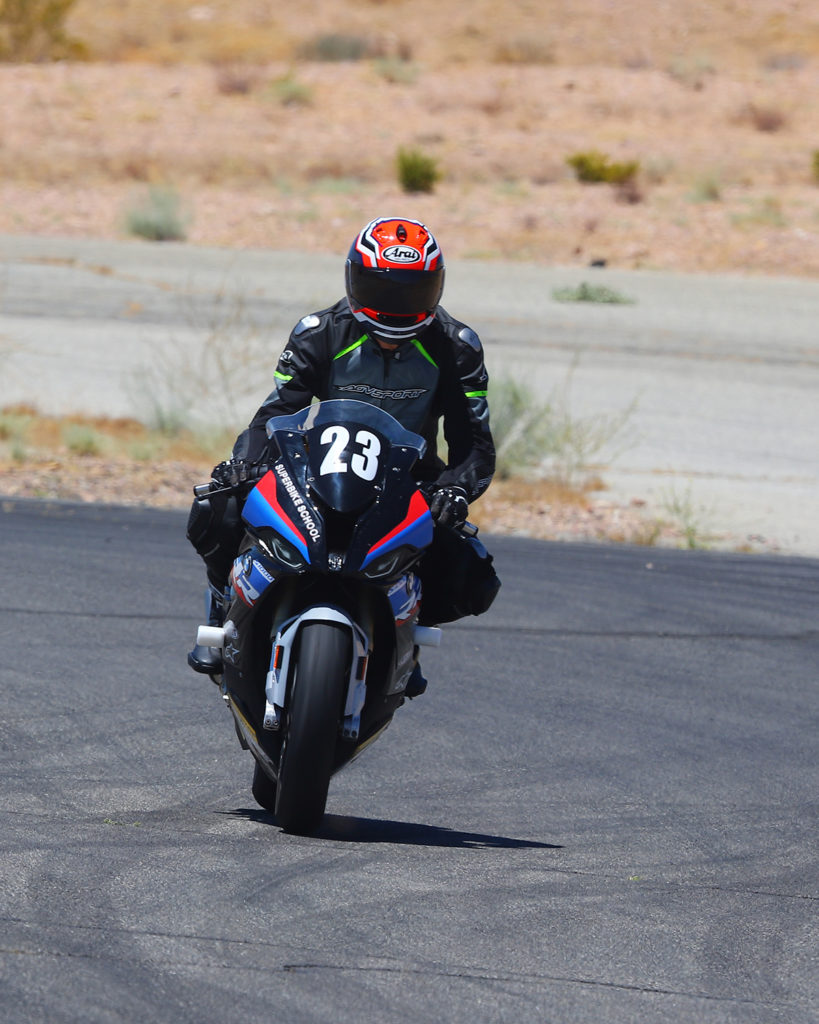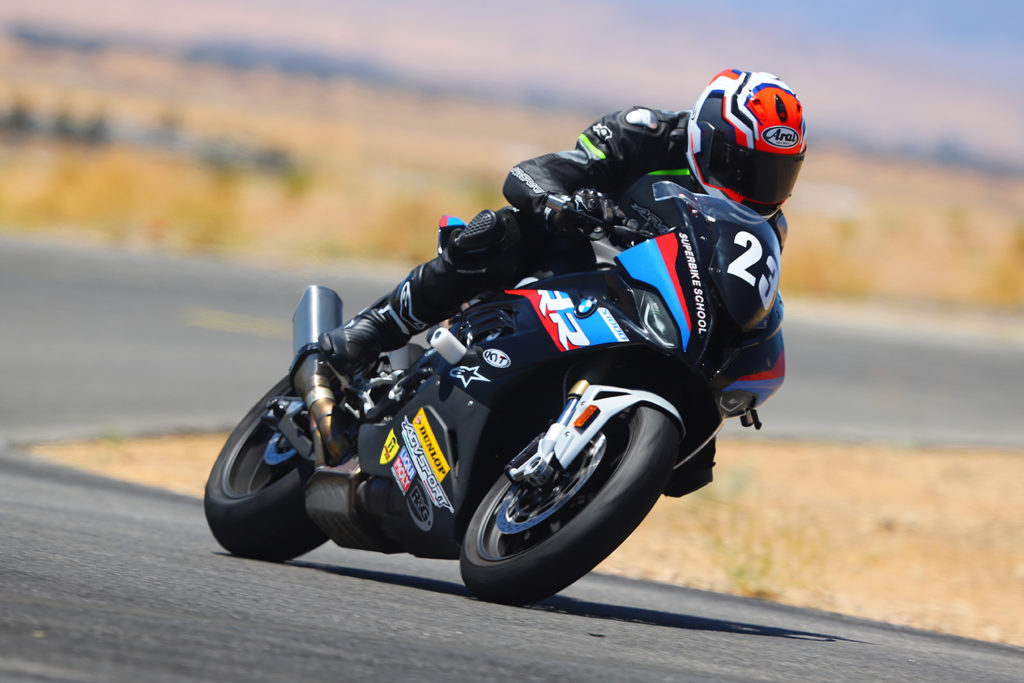
A couple of friends – sportbike riders and track-day regulars – recently invited me on their Sunday morning canyon ride. I showed up on our Triumph Speed Triple 1200 RS test bike. It was early, the road was empty, and we tore away. I say “we,” but I lost sight of them after the first mile and soon resigned myself to not keeping up, doing no justice to the Triumph.
Decades of riding experience have given me the required confidence in physics and tires to throw a motorcycle into a turn, but that confidence faded once our speed picked up. If I was going to truly test bikes like the Speed Triple, I needed to hone my skills. My friends, it turned out, were both graduates of California Superbike School, and over a weekend in June I signed up for two days of training (Levels I and II) at Streets of Willow Springs, a 1.6-mile track in Rosamond, California, about an hour north of Los Angeles.
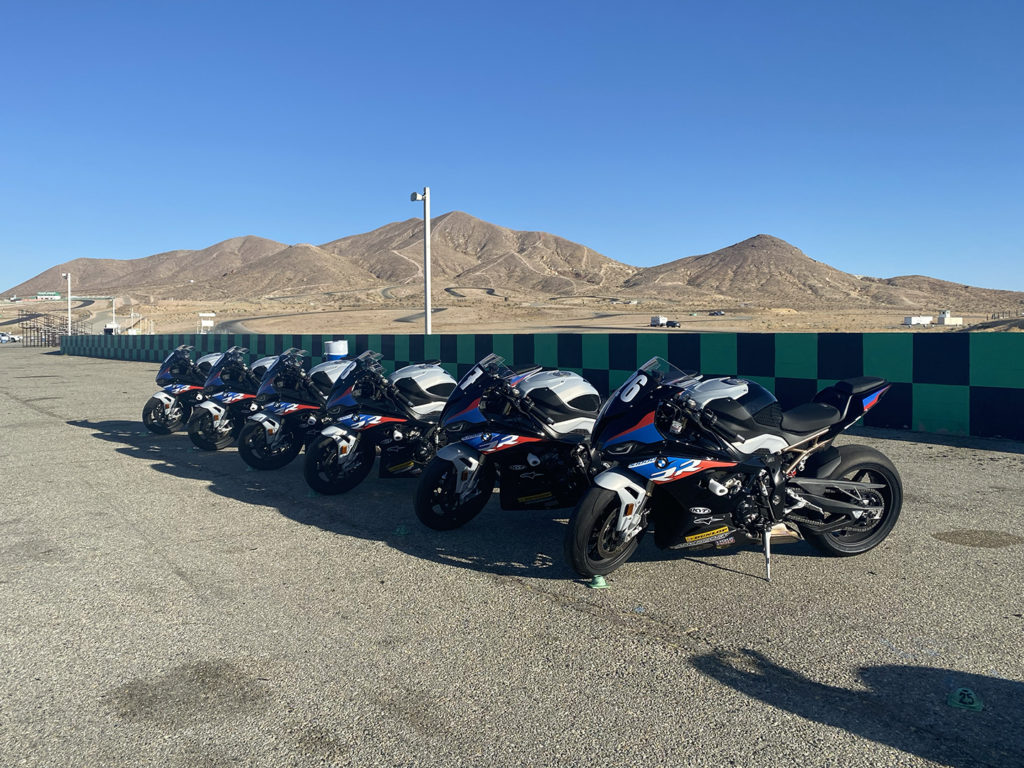
In the 1970s, Keith Code enjoyed some success club racing for the “Pops” Yoshimura team, but he also discovered he had an aptitude for analyzing and communicating the techniques required to carry speed through a corner. Under Code’s instruction, many a young racer shaved seconds off their lap times, demonstrating that speed wasn’t just a matter of innate talent but teachable skills. In 1980, he established a school to offer his unique step-by-step advanced rider training to anyone with a motorcycle license. Four decades later, California Superbike School has become synonymous with sportbike training, with schools in the U.S., the U.K., and Australia.
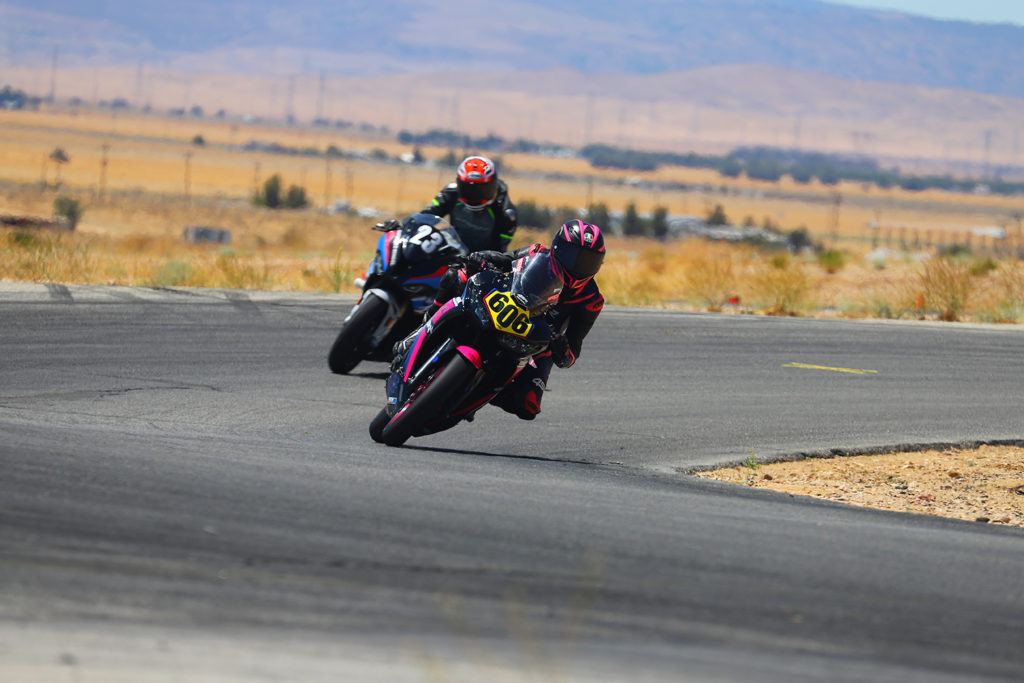
There is something childishly exciting about driving through the gates of a racetrack, especially true when it’s you destined to be on the track, which creates some apprehension. I haven’t so much as sat on a bike with clip-on bars since selling my Kawasaki Ninja ZX-6R years ago. I drew some comfort from the fact that at least half of the 54 people joining me for instruction looked just as nervous as I was. The rest ambled around like they owned the place, posting up in the breakfast buffet and chatting with the staff. I soon found out these were returning students, here for Levels III and IV, and, it seemed, part of the family now. It was encouraging to see half a dozen women in attendance, including Kristina Teskera, a German ex-pat who had been riding for only eight months.
Day-to-day management of CSS is now handled by Keith Code’s son, Dylan. But Keith was there, too, sauntering about and happy to share advice or an anecdote as the operation hummed along around him. Students were separated into manageable groups, alternating between the classroom lessons, on-track drills, debriefing sessions, and breaks.
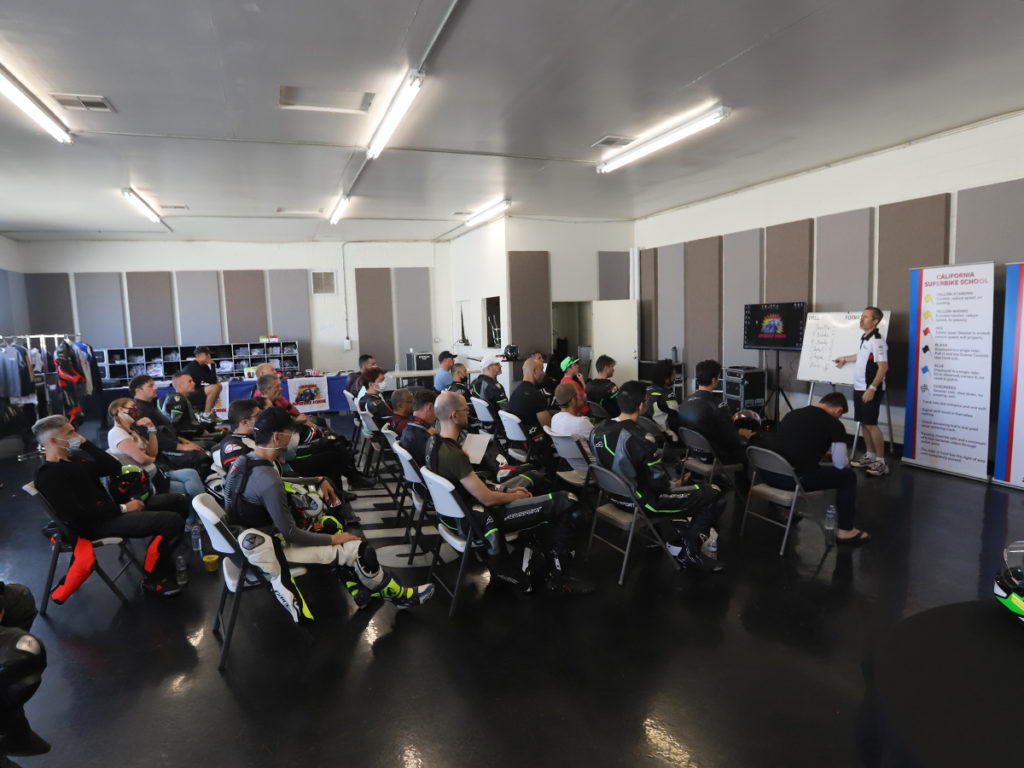
After Dylan delivered our first lesson on throttle control, we filed out into the paddock. The Streets of Willow track, a black ribbon rising and falling with the hilly terrain, formed the backdrop to a line of black BMW S 1000 RR sportbikes gleaming in the morning sun. I suspect even the coolest among us had their hearts in their mouths as we headed to our designated machines.
Lined up in pit lane, I heard Trevor Pennington, the course controller, holler above the resounding throb of engines, “First drill?!” No one gets on track unless they can repeat the name of the drill. This helps us stay focused and allows Trevor to spot students who may be fatigued or dehydrated. I shouted, “Throttle control, fourth gear only, no brakes!” and Trevor yelled, “Go!”
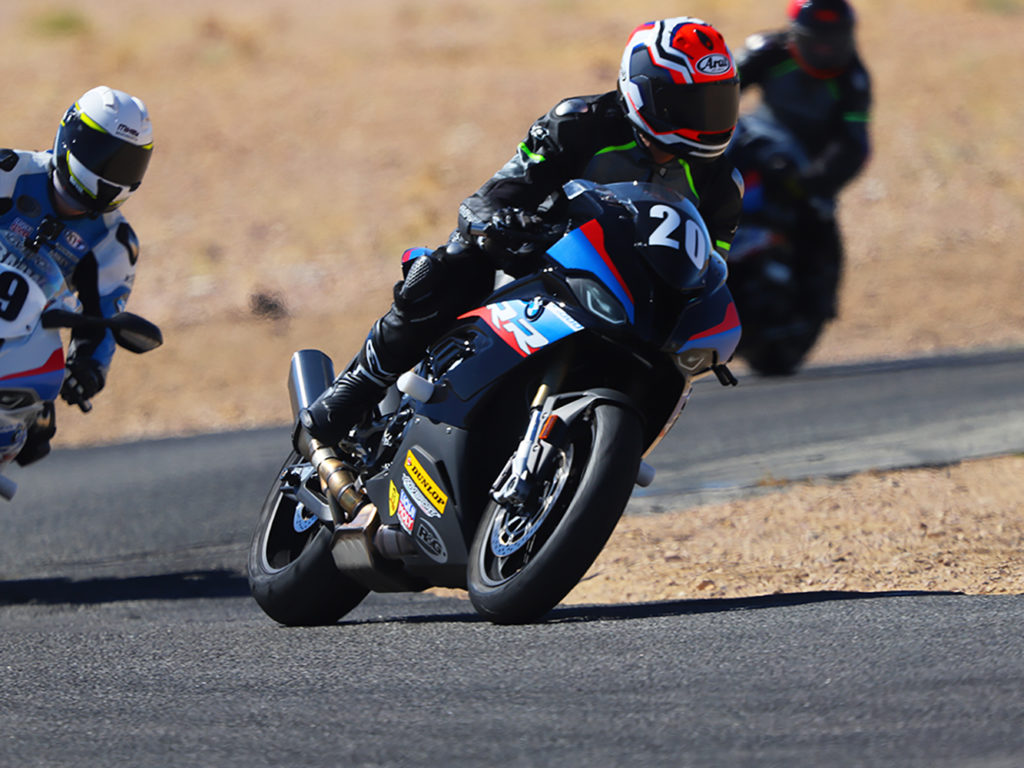
The no-brakes drill focused our minds on gentle throttle inputs. The RRs were set to rain mode and throttle response was forgiving, but I couldn’t find a good position on the bike, had no idea where the heck I was going, I was entering turns too early and then correcting, all the while trying to stay off the levers.
It took a few laps to get acquainted with the track and the BMW. My assigned track coach arced in front of me, tapped his taillight – follow my line – and I started hitting some apexes. After a lap, he pulled off the racing line and waved me on. My turn to lead. A smile found its way to my face as I carried more speed through the Bowl Turn, a 20-degree banked carousel, which was quickly wiped off when I entered the final turn of the session too hot and trail braked well wide of the apex.
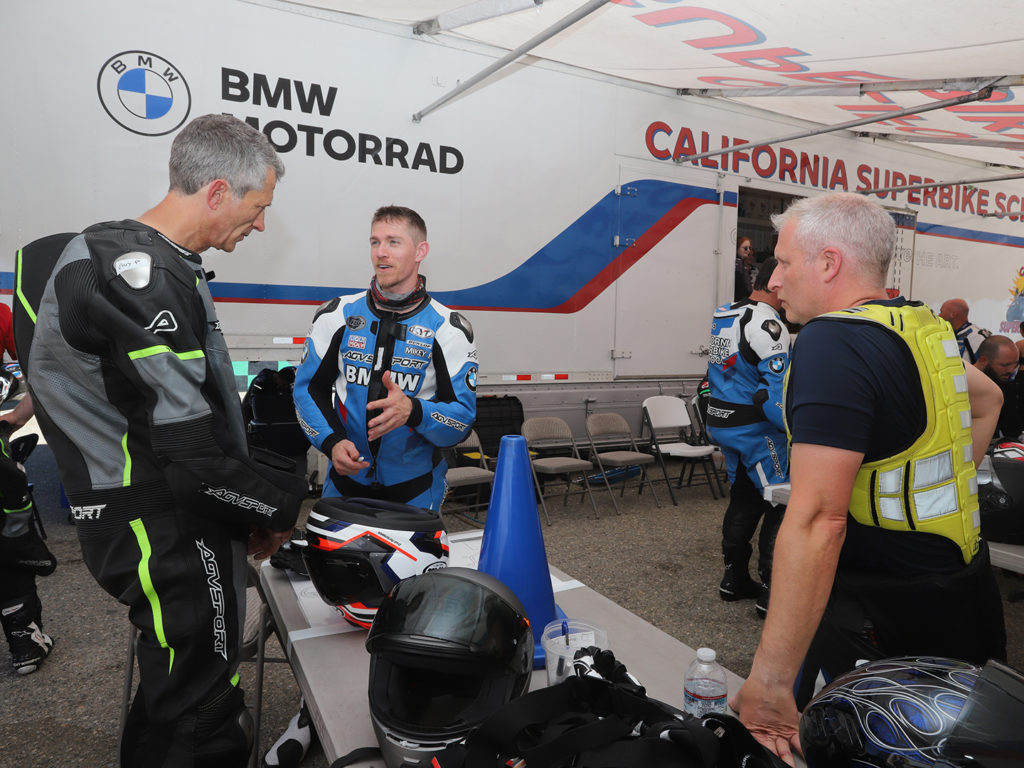
Immediately after each track session, students met their coaches for debriefing, where circuit maps taped to each table provide context for feedback and guidance. My coach, Mike Pesicka, validated some of my good throttle control before digging into the errors. An issue he immediately spotted was my tendency to level the horizon as I lean into a turn. Tilting my head up closes my shoulders and limits my ability to lean.
He then turned his attention to Doug Ramey, who’d trailered his Harley-Davidson Road Glide Special from Carson City, Nevada, to use at CSS. Students can bring their own motorcycles as long as they are safe for track use. Watching Doug fearlessly muscle his 800-pound beast around the tight, technical track was a spectacle, and a little depressing when he blasted past me in the first three sessions.
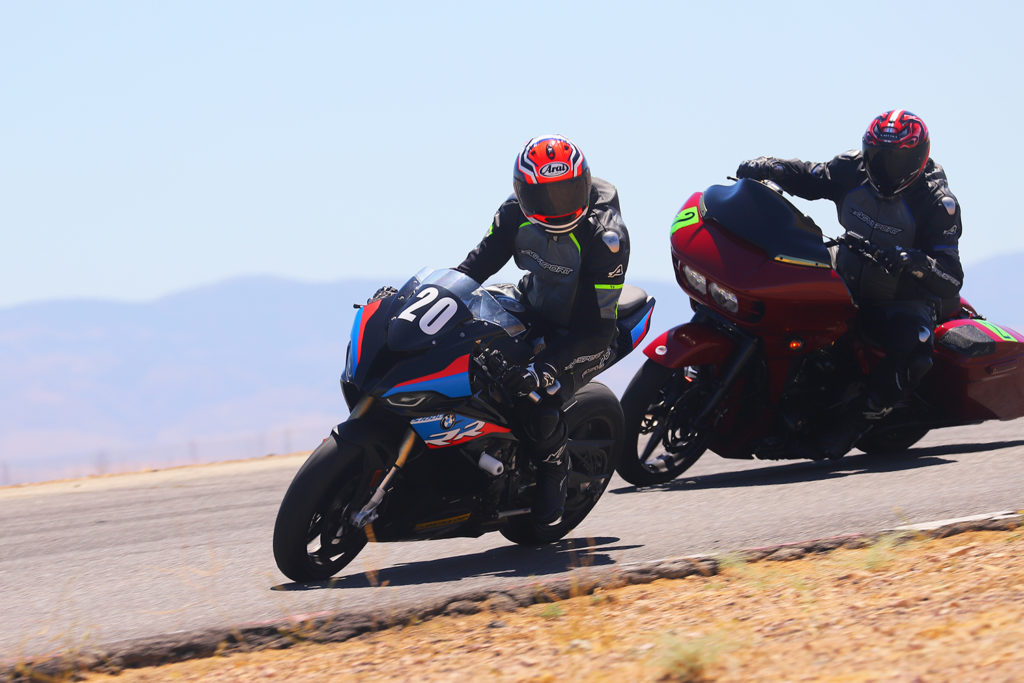
By the last session of Level I, the combination of physical and mental exertion, desert heat, and adrenaline highs and lows had us all fairly exhausted, and I had to ask the guy lined up next to me in the pit lane to remind me what the drill was before Trevor came striding up. The five lessons had focused on rider inputs and improving our turning technique. Turn-in points had been taped to each corner, vastly improving our odds of hitting an apex.
Nonetheless, as my average speed increased, my braking points changed, leading to maddening mid-turn corrections. Mike reported an improvement in head position, but mostly on left turns. He led me over to the Body Position Bike, a static simulator composed of the rider touchpoints – bars, tank, seat, and pegs – affixed to a frame that tilts 45 degrees to each side to mimic on-track motion.
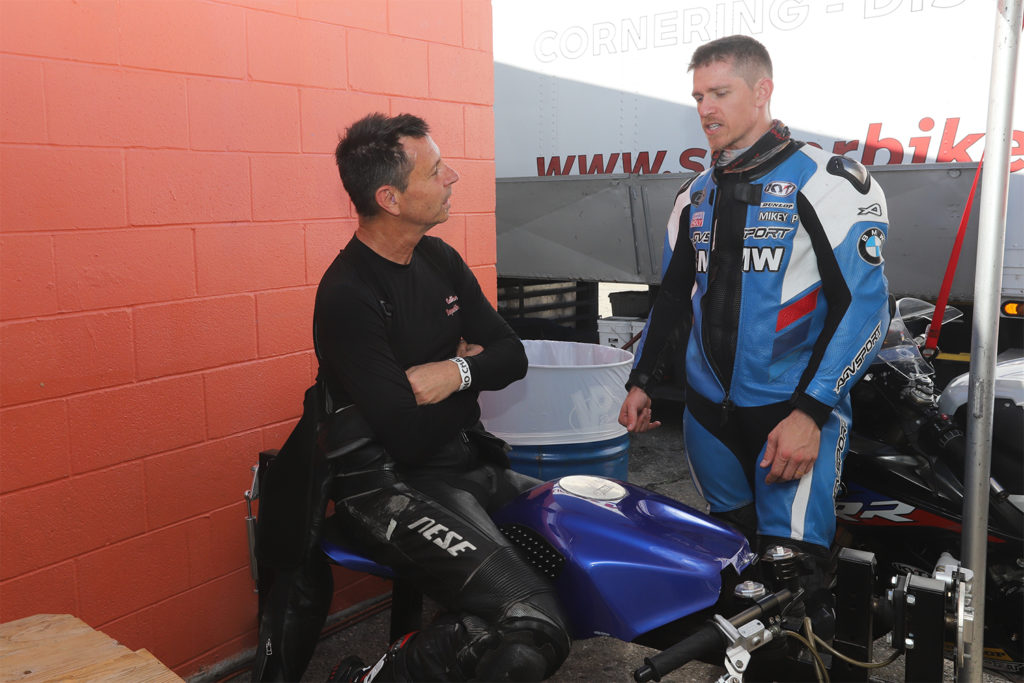
The next day, I was back for Level II training, and Dylan’s first lesson focused on vision. I took it easy during the first track session, and after getting Mike’s input, I headed for the Lean Bike. Each level includes one supplementary practical lesson, and I met CSS coach Johnny Haynes out on the skidpad. He stood next to a sportbike modified with spring-loaded outriggers, each tipped with a caster wheel, making it crash-proof.
Johnny immediately corrected my position on the seat, which he attributed to slippery leathers. A quick call on the radio brought the sticky butt spray, and after receiving a liberal coating, we resumed the lesson. Johnny had me using my outside knee to grip the tank, helping keep my weight off the bars, while pointing my inside knee toward the corner.
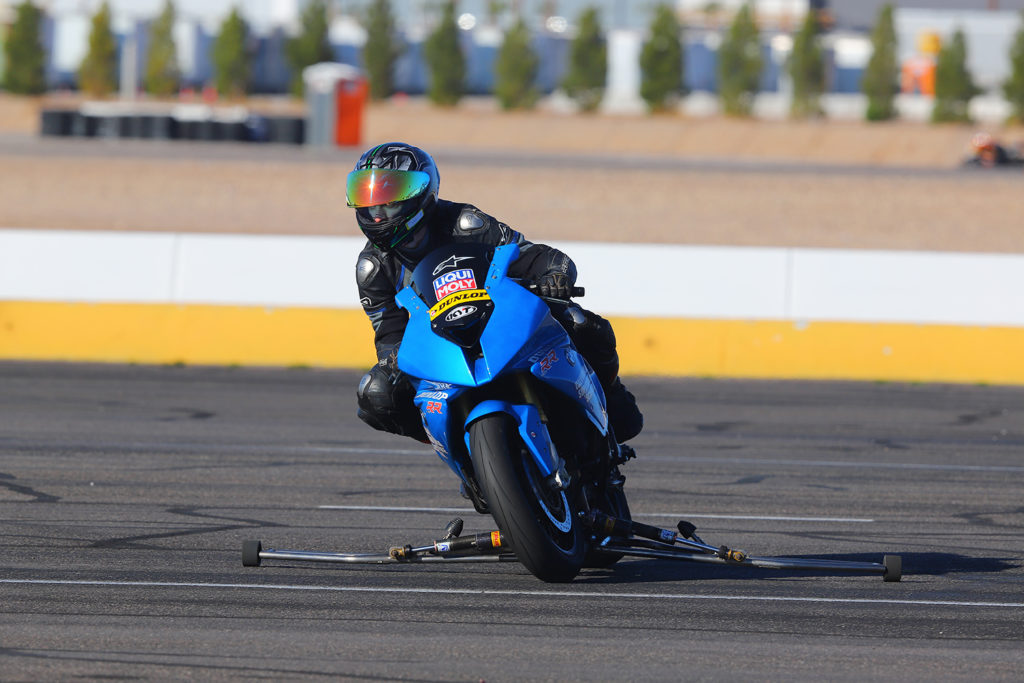
Now that I was moving around on the bike and digging my knees into the tank, track sessions had become increasingly demanding and by the last, my legs were like jelly. I took the final lesson on trail braking as an invitation to add speed, and when Mike arced in front of me for the last time, he seemed noticeably quicker. I fell in line behind him, the rush of tarmac closer than I’ve ever dared.
As we rolled out of the bowl, Mike’s penultimate debrief fresh in my mind, I wound on the throttle the moment I touched the apex, releasing the BMW’s ballistic power and forcing me to the outer curb. I sat up at the kink just as the tach hit 10,000 rpm, adrenaline coursing through me, and saw Mike glance in his mirror and nod. I was right on his tail, and nothing could have pleased him more.
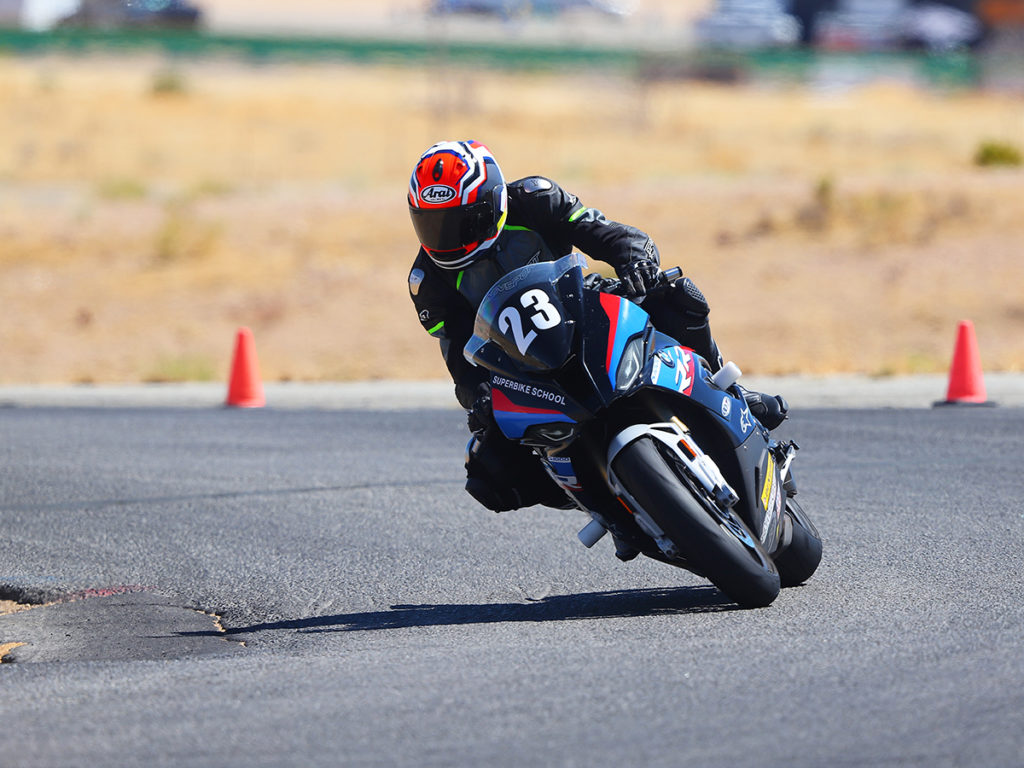
On a racetrack, to be fast around a corner is everything. But more importantly, for most of us, the skills CSS teaches make for better, safer road riding. As I would discover only a week later, applying effective vision, measured control inputs, and braking techniques can make the difference between walking away from disaster or not. Advances in technology have far outpaced human evolution. Motorcycles are faster and, thanks to ABS, traction control, and IMU sensors, are safer than ever, whereas motorcyclists are the same Homo sapiens they were 100,000 years ago. CSS is a potent upgrade to the most critical safety feature, the rider.
I’ve attended many driving and enduro schools, and the program content, quality of equipment, and the professionalism of the staff at California Superbike School are a model for how training should be done. I look forward to going back for Level III. I’ll stride in, grab a Danish, and shoot the breeze with Mike and Johnny.
California Superbike School holds training from February through November at tracks throughout the U.S. Single-day schools cost $725 per day using a CSS bike or $525 per day if you ride your own. The fee includes classroom training, track sessions, coaching, food, and drinks, and CSS has a well-stocked supply of suits, boots, gloves, and helmets for students to borrow. If you want more track time and more personalized coaching, you can sign up for a 2-Day Camp. For more info, visit superbikeschool.com.
The post Back to California Superbike School first appeared on Rider Magazine.
Source: RiderMagazine.com

